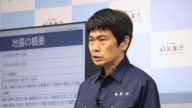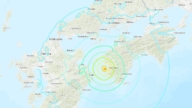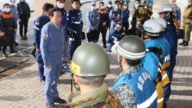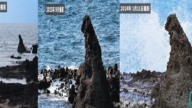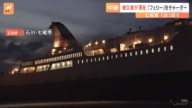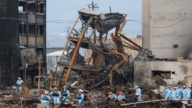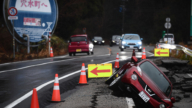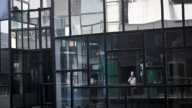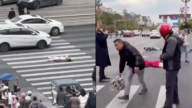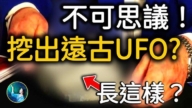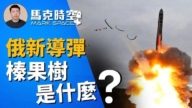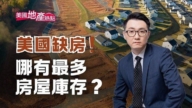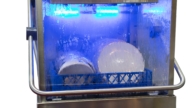【新唐人2011年3月12日訊】 發生在11日下午日本稱為“國難”的大地震,至今死傷人數不斷攀升。地震引發的海嘯撲向岩手縣釜石市,淹沒房屋、車輛、道路。(畫面是電視臺英語報導)
Video footage filmed on Friday (March 11) showed the moment a tsunami hit the coastal city of Kamaishi.
The dramatic video, shot by local television broadcaster NHK, shows water ripping through the streets of Kamaishi sweeping away boats, cars and houses.
The tsunami that hit northeastern Japan followed an 8.9 magnitude earthquake.
A tsunami is not a single wave, but a series of waves. They can travel across the ocean at speeds of up to 1,000 km (620 miles) an hour, the speed of a jet aircraft.
The destructive force of a tsunami comes not from the height of the wave, but from the volume of water moving. It is as if the ocean floods the coast, smashing everything in its path, and then just as quickly recedes. Many people who survive the initial wave impact are washed out to sea as the tsunami recedes.
Japan on Saturday (March 12) scaled back its tsunami warning for much of the country, apart from a stretch of Pacific coastline closest to the quake’s epicenter.
The unfolding natural disaster, which includes a nuclear crisis after an explosion at a nuclear plant in Fukushima prefecture, has prompted offers of search and rescue from nearly 50 countries.
Radiation leaked from an unstable Japanese nuclear reactor north of Tokyo on Saturday, the government said, after an explosion blew the roof off the facility.
The developments raised fears of a disastrous meltdown at the 40-year-old Daiichi 1 reactor plant.
Local media said the death toll was at least 1,300, most of whom appeared to have drowned in churning waters.
The earthquake was the fifth most powerful to hit the world in the past century. It surpassed the Great Kanto quake of Sept. 1, 1923, which had a magnitude of 7.9 and killed more than 140,000 people in the Tokyo area.


